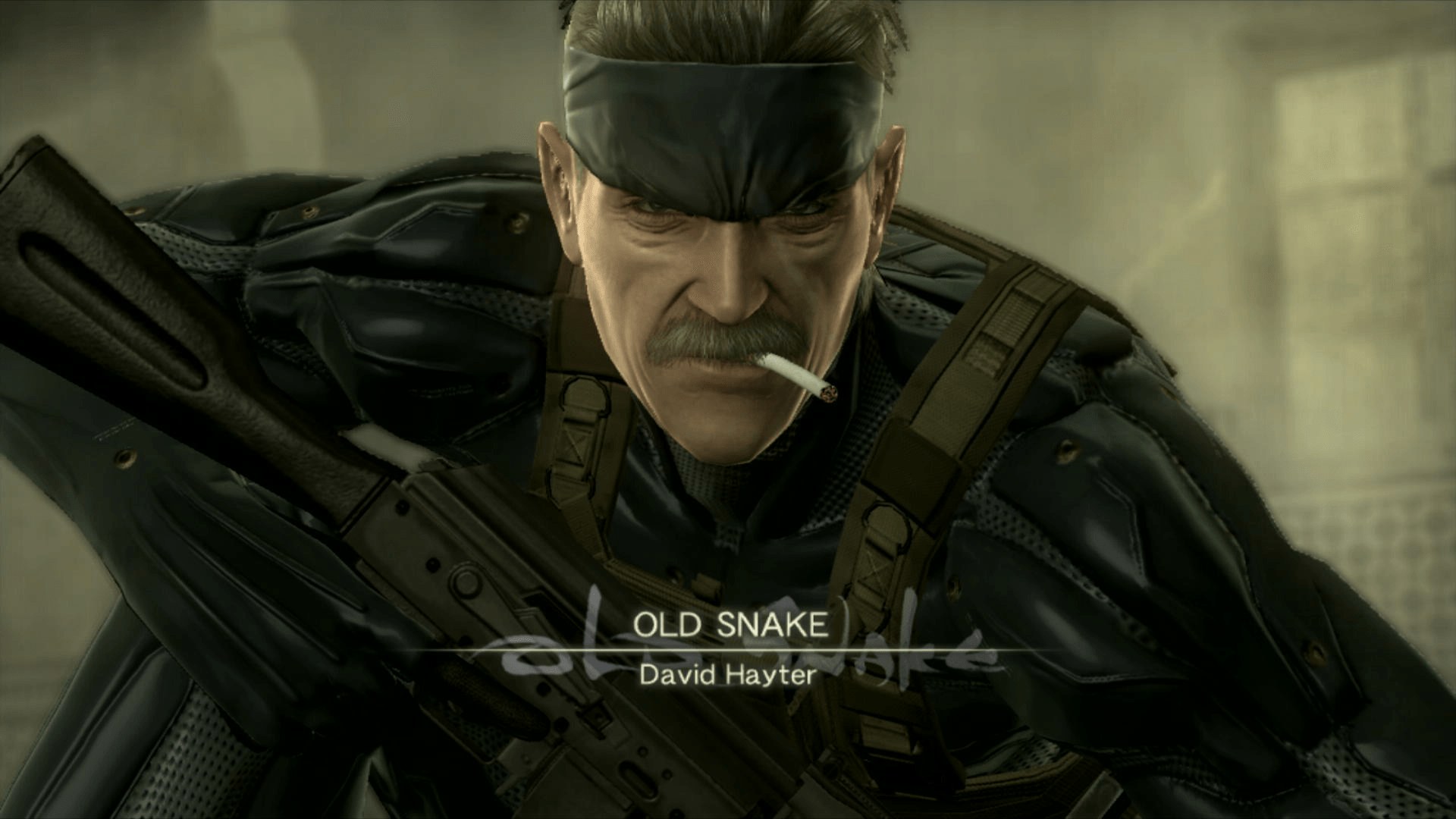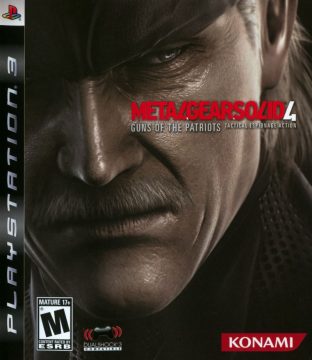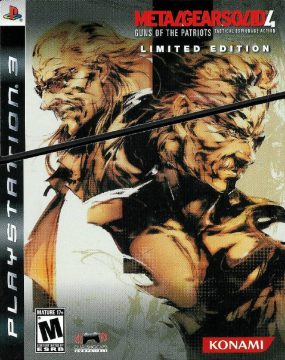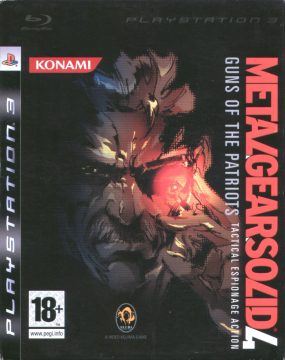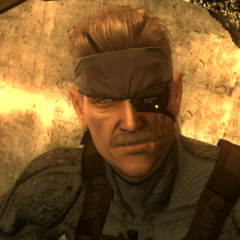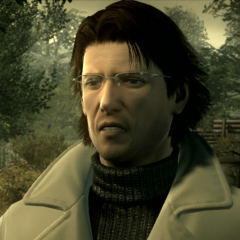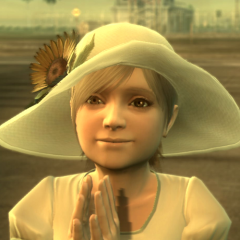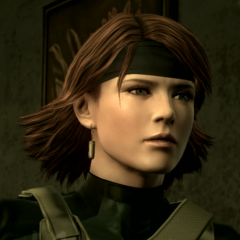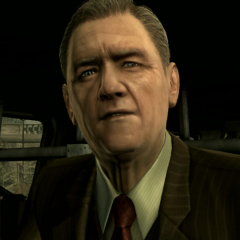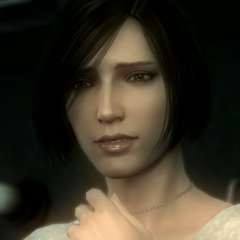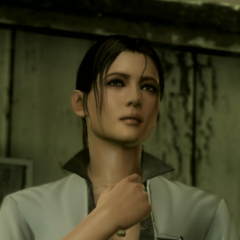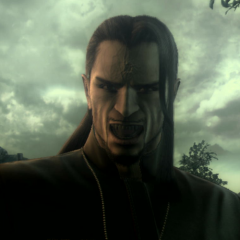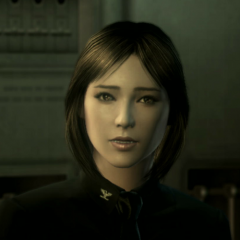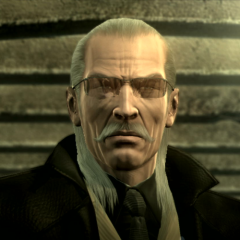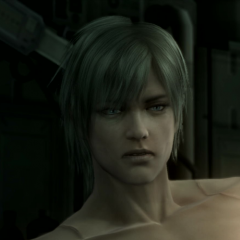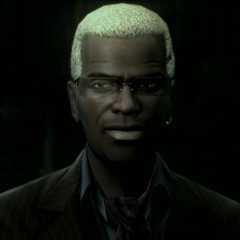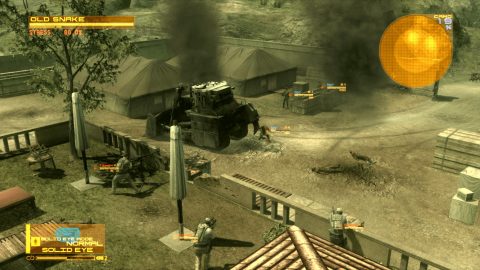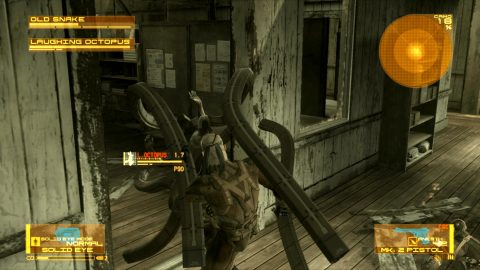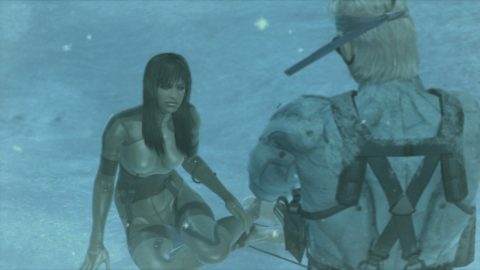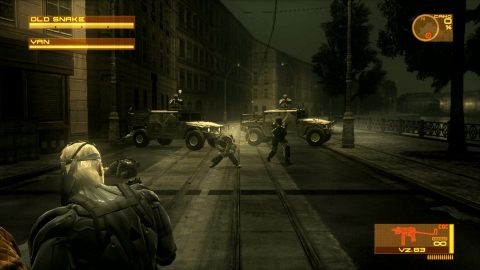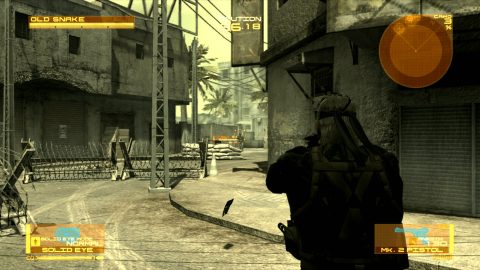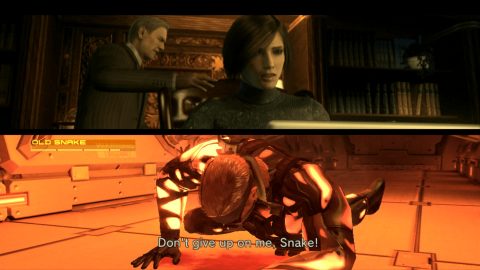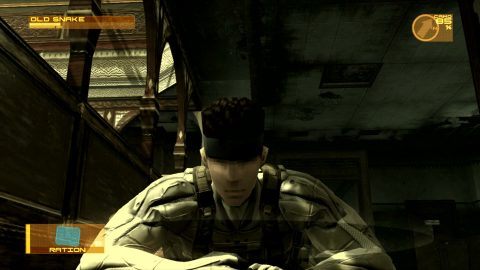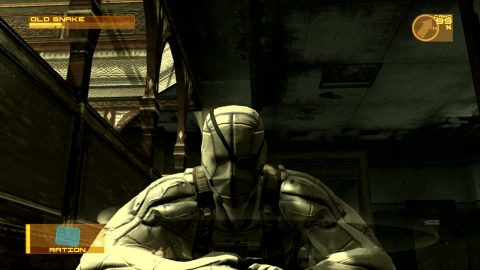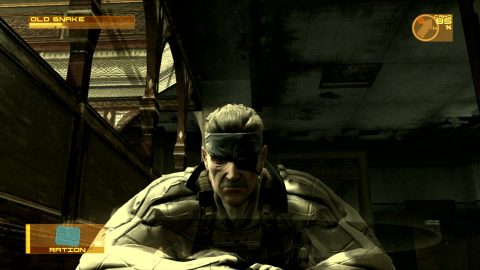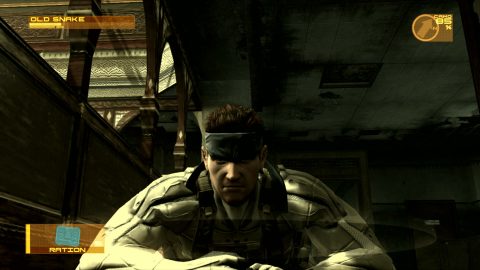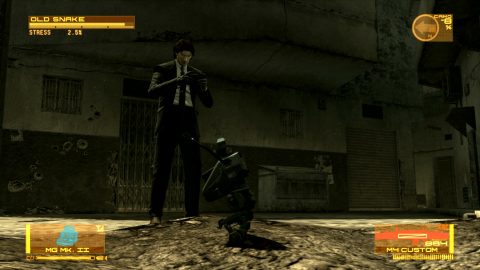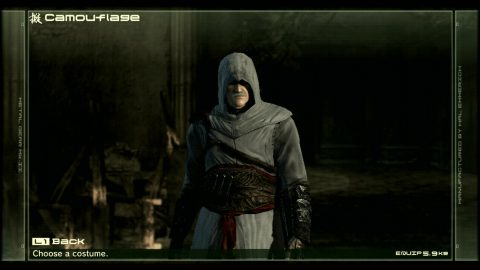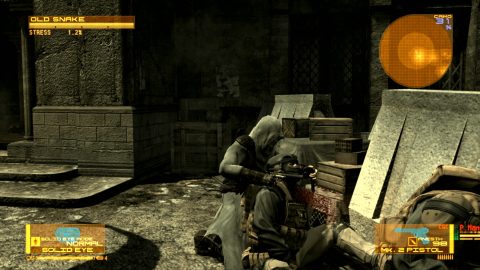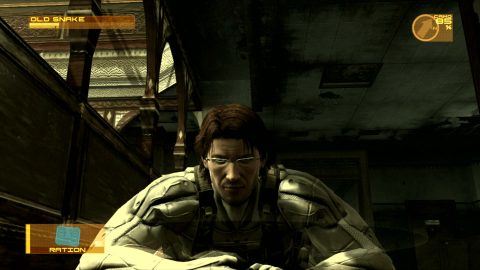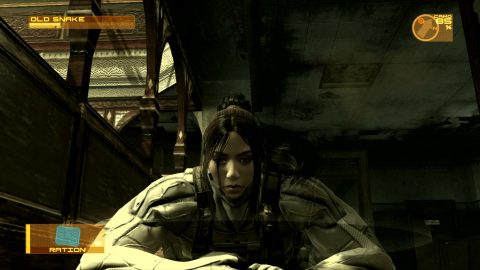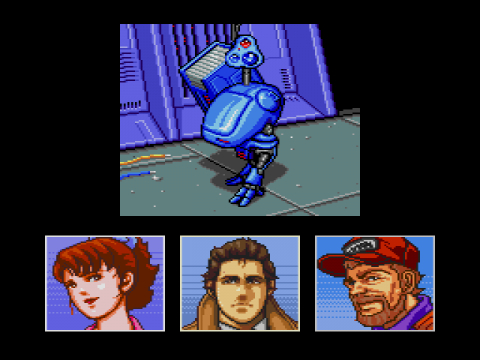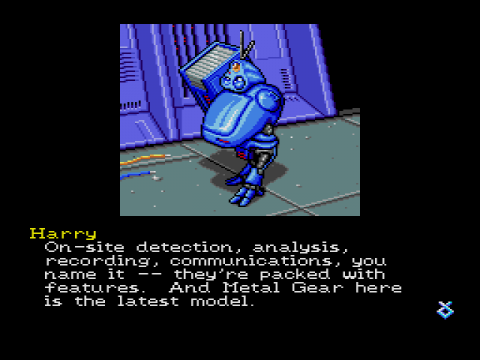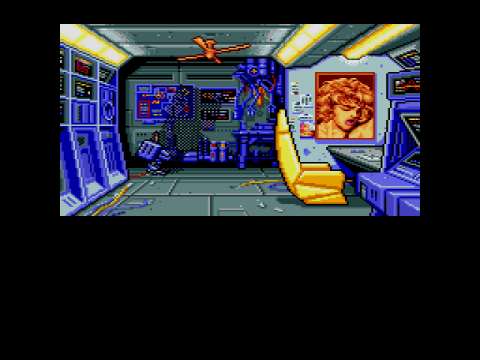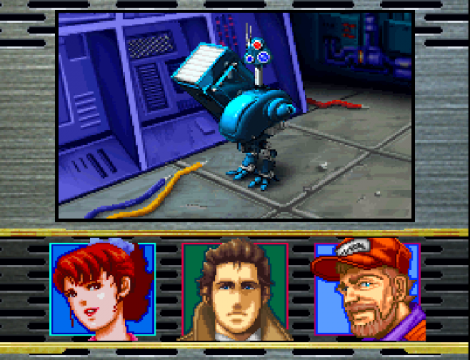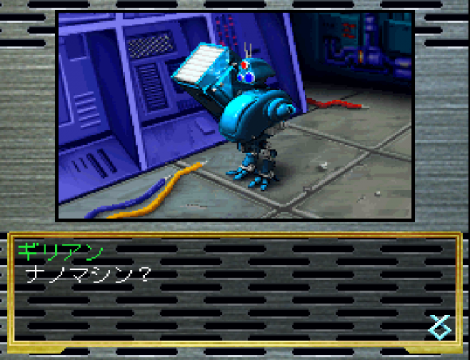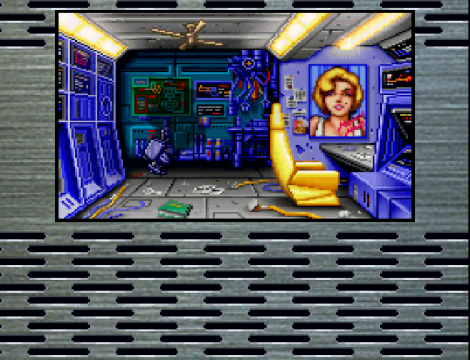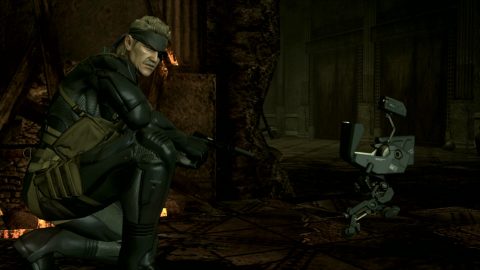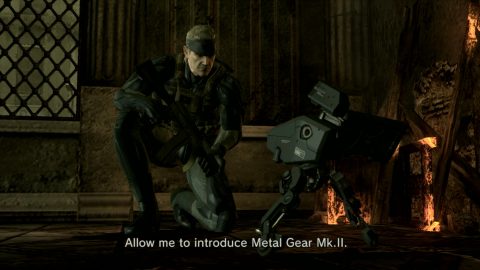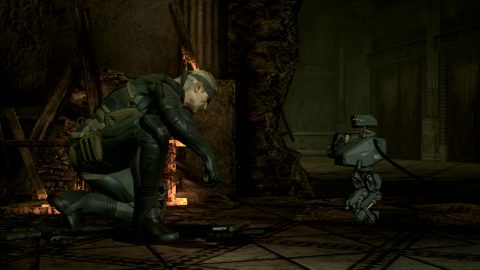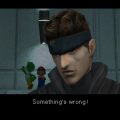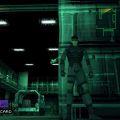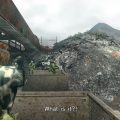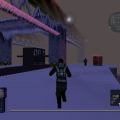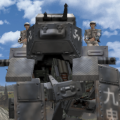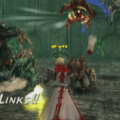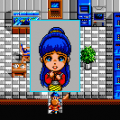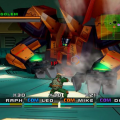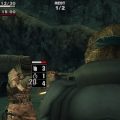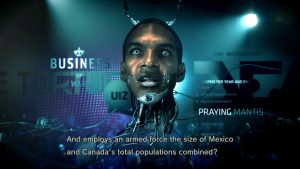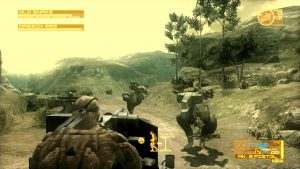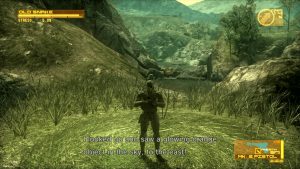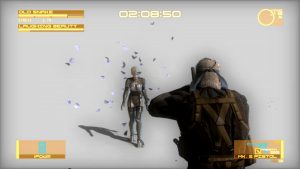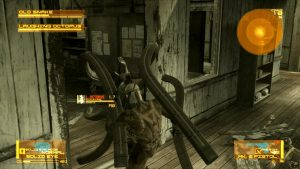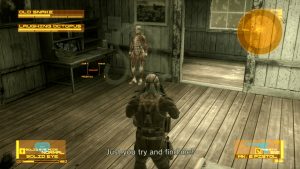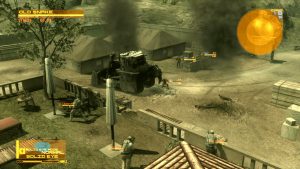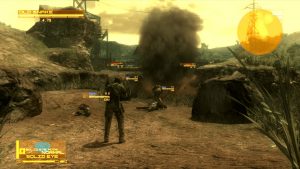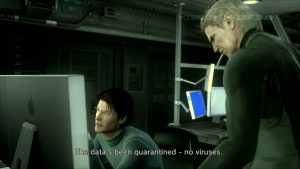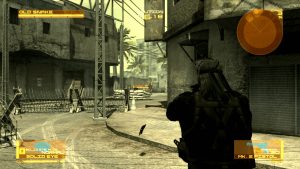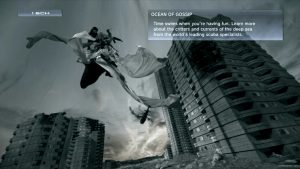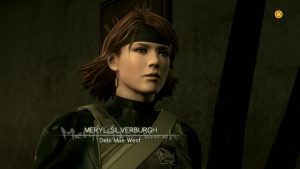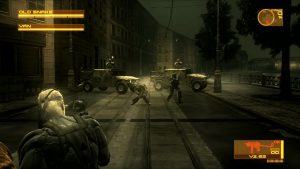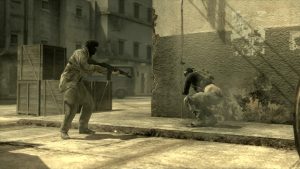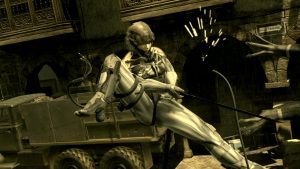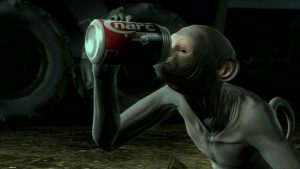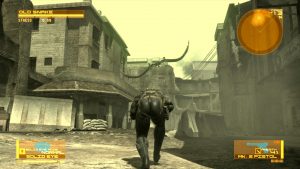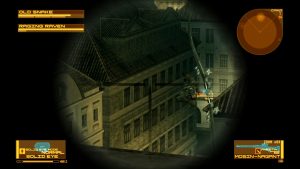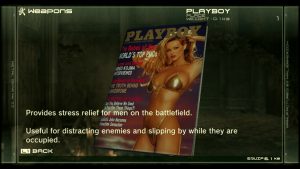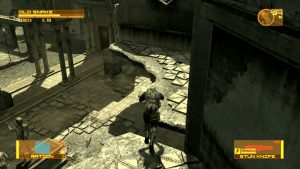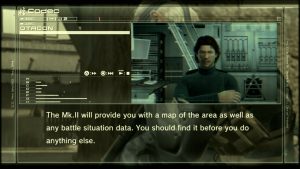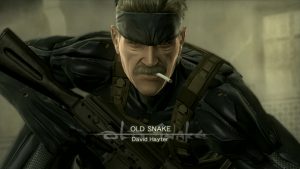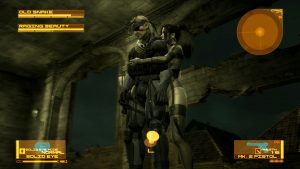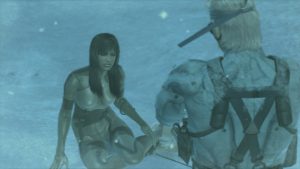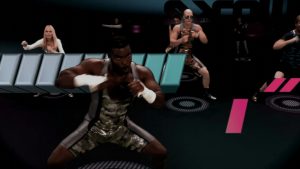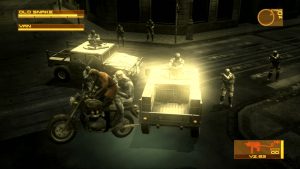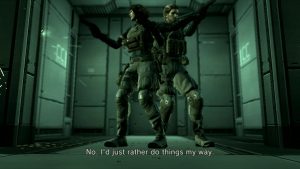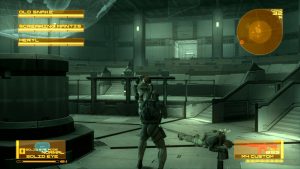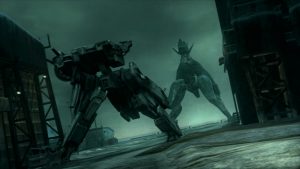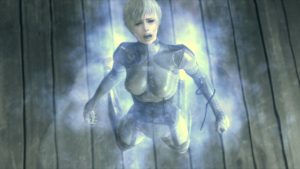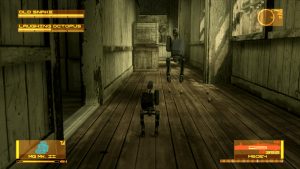- Metal Gear
- Snake’s Revenge
- Metal Gear 2: Solid Snake
- Metal Gear Solid
- Metal Gear Solid Integral Staff Commentary
- Metal Gear Solid (Game Boy Color)
- Metal Gear Solid 2: Sons of Liberty
- Document of Metal Gear Solid 2, The
- Metal Gear Solid: The Twin Snakes
- Metal Gear Solid 3: Snake Eater
- Metal Gear Solid 4: Guns of the Patriots
- Metal Gear Solid: Portable Ops
- Metal Gear Solid: Peace Walker
- Metal Gear Solid V: Ground Zeroes
- Metal Gear Solid V: The Phantom Pain
- Metal Gear Rising: Revengeance
- Metal Gear Touch
- Metal Gear Acid
- Metal Gear Acid 2
- Metal Gear Solid Mobile
How much is too much?
Kojima and company were riding on top of the world after their last two games. Metal Gear was a system seller and a critically acclaimed series. In 2005, Konami restructured their development studios once more, but allowed Kojima to spin off his own studio, dubbed ‘Kojima Productions.’ Now, with some degree of freedom, the team plunged headlong into another new console generation and all the power it could afford their wacky ideas. Metal Gear Solid 4: Guns of the Patriots, when it was released in 2008, was a lot. It is the most Metal Gear thing that exists, and that is both a blessing and a curse. The game is so weighed down with its history, its ideals, and its hang ups that it starts cracking under the weight.
Set five years after the events of Metal Gear Solid 2, the world is full of endless war. Private Military Contractors (PMCs) and rebel militias wage battles across the world, all patched into the network controlled by the Patriots, the shadowy group behind the events of the second game. The result is a pervasive economy powered by conflict. In the intervening time, Solid Snake has aged faster than the average person and his body has deteriorated to a shell of the hero he once was. Equipped with a new suit, he’s on the hunt for Liquid Ocelot, who is planning to hijack the Patriots’ vast network and use it to control the world. Once again, with Otacon by his side, Snake heads back into the battlefield for one last job.
Characters
Old Snake
His clone status has accelerated his aging, graying his hair and wrinkling his skin. But despite that, Solid Snake’s keeping on with his fight against Metal Gear and Liquid Ocelot. Despite the enhanced risk to his deteriorated state, he still hasn’t given up smoking.
Otacon
Otacon remains Snake’s tech support. He sports a light beard now to denote his age. He uses the Metal Gear Mk. II to follow Snake onto the battlefield, allowing the traditionally squeamish scientist to offer support more directly than before.
Sunny
Sunny is Olga Gurlukovitch’s daughter, and a bright savant at computers and coding. She helps Otacon design and make many of Snake’s gadgets, including the Mk II. She’s still learning how to make eggs sunny side up without burning them.
Meryl Silverburgh
Leader of her own squad now, Meryl is no longer the green-eyed rookie she was before. She still hasn’t accepted that Colonel Campbell as family, or that the old Colonel has remarried to a woman who’s about her own age.
Colonel Campbell
The Colonel sports a walking cane in his old age. He’s still full of information, working for the UN Security Council. He married Rosemary, for some reason.
Rosemary
Sporting a stylish haircut, Rosemary uses her new degree in psychological counseling to help keep Snake’s Psyche in check. She married Campbell, for some reason.
Naomi Hunter
The good doctor returns, as mysterious as she’s always been. She seems to be working with Liquid Ocelot, maybe. She traded in her sweater from the first game, for a shirt that yearns for more buttons.
Vamp
Everybody’s favorite bisexual vampire is back, and he’s working for Liquid Ocelot. He’s still pretty much the same as before, licking knives suggestively and leaping all around.
Mei Ling
After Shadow Moses, Mei Ling joined the US Navy and now she’s the captain of the USS Missouri, a newly recommissioned tanker that previously operated as a museum. She’s still brimming with aphorisms for any occasion.
Liquid Ocelot
Ocelot is still Liquid’s right hand man, quite literally now. The rapacious maverick has been subsumed by Liquid’s desire. He’s in control of the world’s largest PMCs through a shell company, Outer Haven.
Raiden
Raiden’s a ninja robot now. He separated from Rosemary after the miscarriage of their child. He got his new robot body after the Patriots captured and experimented on him during his attempt to save Sunny.
Drebin
One of the few new characters to the game, Drebin is an arms dealer, selling unmarked guns outside of the Patriots’ control. Yes, his name & occupation are a reference to Frank Drebin of The Naked Gun movie series. It’s up for debate whether that’s brilliant or dumb.
Goodness, does Metal Gear Solid 4 loves its story! It’s so enamored with it, much to the detriment of the pacing of its 5 acts. The series has always had tension between narrative and gameplay. It often indulges in lengthy info dumps as characters expound endlessly about nanomachines and nuclear proliferation, or punctuates long narrative moments with small segments of interaction. Guns of the Patriots, however, tilts the balance far more toward story than previous entries. Metal Gear Solid 3 reveled in its story, for sure, but there was a careful and deliberate pace at which that game unfolds, and its story was a relatively simple take on the spy genre. Metal Gear Solid 4, in contrast, is an exhausting excess. Each act feels longer than the last. In trying to resolve story threads from the previous games, creating new threads to resolve the old ones, and trying to also resolve the new ones, it ends up confused. What it wants to talk about – the military industrial complex, artificial intelligence, getting older – gets drowned out by its own narrative noise. Literally no joke, a huge spoiler character takes approximately ten minutes to walk to their death, monologuing all the way to the grave. It’s all a bit much, even considering its lineage. The game needed an editor. It needed someone to say “no” to its many ideas and let the best ones surface.
One of those desperately needed edits are the Beauty and Beast Unit. These 4 women, portrayed by real life models, wear different animal themed power suits, each serving as a mascot for the different PMCs in the game. The actual fights are serviceable, if uninspired. Some of them have a few clever touches, like Screaming Mantis’ call backs to her namesake from the first game. But in general, they devolve into long battle of aiming fast, popping off a few shots, and hiding before the enemy strikes back. They lack the inventiveness of the previous games’ boss fights and can become tedious.
Of course, combat is not why the B&B Unit are ‘memorable.’ Each of the four bosses has a creepy second phase. After a suggestive, incoherent monologue with lots of leering camera shots, the woman in the beast attacks Snake by trying to hug him to death. Take too long, and both characters are transported to a white dimension where he can coax her into different poses and dances using music and the in-game camera. Players only hear of her tragic back story after she is defeated, courtesy of Drebin.
It’s hard to divine what good intentions there could have been with this approach. The game trivializes the trauma these characters endure by relegating it an afterthought, the women could be swapped around with no material difference in characterization, and the way the game portrays them is virtually indistinguishable from actual gravure and fetish material. It almost could have worked as parody, if the whole thing didn’t come across so earnest. And yet, somehow, it could have been even worse! Kojima wanted the characters to be naked during these scenes, and at a promotional event in Japan, Shinikawa revealed that they actually had unused motion capture done by the models in the nude for that purpose.
The story is so plentiful that Kojima Productions released a compendium called the Metal Gear Solid 4 Database, for free through PSN. It catalogs the events of the long running series, with all of its relationships and details laid out and organized, much like Hyrule Historia does for The Legend of Zelda. It even scans for completed save data, locking spoilers for the game until it finds a finished file. More story was to come, so naturally, it’s not entirely complete anymore. It also gets some details confused or wrong, and certain spoilers about Liquid Ocelot didn’t get put behind the save game lock, but regardless, it provides an easy primer for the series’ lore for those who want it.
All of this story is frustrating, as Metal Gear Solid 4 has a lot going on in the gameplay department. The battlefields Snake wades into feel alive and dynamic, as PMCs and militia are regularly engaging each other in the chaos of battle. Enemies still suffer from forgetfulness, but they see farther and are quicker to react than before. Despite the inhospitable situations he finds himself in, Old Snake’s got some tricks up his sleeve. His suit uses OctoCamo, able to adapt to the environment’s color and texture by laying flat or leaning up against a wall. This alleviates having to jump back and forth into menus to change camouflage. An upgrade allows Snake to change his face, and there are unlockable costumes as well. The Solid Eye, the stylish eye patch over his right eye, acts as an AR overlay to visualize the different factions and other data in the field, providing radar, night vision, and binoculars (monocular?). The white circle around Snake when he stands still, called the Threat Ring, tracks the movement of enemies. The closer an enemy, the more raised that part of the ring is. Metal Gear Mk. II, a small robot created by Otacon and Sunny, can be used in the field, able to scout ahead and neutralize enemies with its shock whip.
When stealth fails, Snake has more weapons to fall back on than ever before. Drebin opens his shop up right in the pause menu after Snake encounters him in the game, and he takes Drebin points, the game’s scoring system, in exchange for his wears. Guns and ammo can still be found in the field but some are ‘ID locked’ to specific soldiers, requiring a small fee to allow Snake to use them. Even more can be unlocked through completing the game with certain conditions, totaling up to 70 weapons in all. It makes the game feel more action oriented, and perhaps a bit easy. There’s always more than enough points to go around, for finishing acts and finding previously discovered weapons on the field, that it is easy to ‘credit feed’ the ammo needed for a boss or a segment. By holding down Triangle, players can move and aim in first person as well, lending a clunky FPS feel at times.
Snake doesn’t just have new tools to roam the battlefield with; he has to manage new problems as well. The new Psyche meter functions like stamina from the previous games, regulating Snake’s ability to climb and hang from ledges, but with a twist this time. Snake can become stressed out from being too exposed or when caught by the enemy, draining his Psyche. A low level leads to flubbing his shots or getting back pains at inconvenient times. Both of these mechanics are also related to battle fatigue, affected from killing too many enemies or being caught in fire fights too often. And what’s more, the Psyche meter can be affected by the environment, such as bad smells or getting bad news in a cutscene. Luckily, both Psyche and stress respond positively to eating, drinking, smoking, and hiding in cardboard boxes or safe, shaded areas. The challenge of stealth in Metal Gear Solid 4 is a matter of navigating the stress & chaos of the battlefield using these tools. It leads to some tense, exciting encounters, especially on higher difficulties.
Metal Gear Solid 4 doesn’t skimp on those small details that the designers at Kojima Productions are known for. The game opens with the player flipping through fictional TV channels with different shows, like an interview with David Hayter wearing his own Solid Eye and a bunker cooking show with some gross looking dishes. Look close enough and you might find Hideo Kojima hiding in the background. Building on the casting theater of the previous games, the OctaCamo carries over into cutscenes, with lipsync and motion capture intact, so Otacon (with Snake’s voice) can totally be the star. The game goes ham on product placement, especially with Apple products. Snake has access to an iPod rendered in loving detail, complete with accurate scroll wheel controls like all the cool kids used back in the day. It even has a set of podcasts (one in English and one in Japanese, depending on region) about Metal Gear Solid 4, which at the time it was released could only be listened to in the game Metal Gear Solid 4. The adult magazine distraction item now carries Playboy logos. Snake has a costume based on Altair from Assassin’s Creed, not the last time there would be a crossover between the two series. And this doesn’t even begin to cover references and callbacks to the series itself. Metal Gear Mk II’s design should look familiar for anybody who’s played Snatcher. The unlockable Patriot gun sometimes plays the first few bars of ‘Snake Eater’ when used. An entire act of the game is devoted to the first Metal Gear Solid.
Guns of the Patriots took full advantage of Sony’s hardware. Levels are made to be even more multi-layered and sprawling than Metal Gear Solid 3, full of even more details around every corner. Guinea pigs scurry around the grass. Snake’s mustache frosts over in colder climates. Soldiers engage one another on the battlefield, each with their own AI. During select cutscenes and gameplay, a splitscreen effect is employed, something rarely seen even now. It’s impressive how the designers were able to feature different characters and settings on both parts of the screen. But all these levels, details, and effects comes at a price. The PlayStation 3’s Cell processor can’t handle everything that’s being thrown at it. Performance oscillates depending on where the camera is pointed and what action is happening, including during cutscenes. It’s a rough game to play today on original hardware, and one has to hope that a port or enhancements in emulation will one day help it run better. Despite rumors of an Xbox 360 port, Metal Gear Solid 4 remained a PS3 exclusive. It also never got an expanded edition, breaking the trend from the last three games. A 2012 update, however, patched in much requested Trophy support, while ending online services.
The soundtrack was a team effort this time around. Harry Gregson-Williams, from Metal Gear Solid 2 & 3, and Nobuko Toda, who worked on both Metal Gear Ac!ds, were initially brought on. Later, GEM Impact, headed up by series veteran Norihiko Hibino, produced more music for the game. The result is a mishmash of identities and themes, which works for Metal Gear Solid 4’s jumble of ideas. Curiously, ‘Metal Gear Solid Main Theme’ is absent in this game. It turns out that the theme has several similarities to a piece by Russian composer, Georgy Sviridov. As such, Konami elected to scuttle the song from future games, starting with this one. In its place, composers explored new ideas. The opening song, ‘Love Theme,’ composed by Toda with lyrics written in Hebrew & sung by Jacki Presti, is a lingering tune representing the treacherous nature and quiet dignity of Old Snake’s journey. The game ends on a cover of the 1971 protest song, ‘Here’s To You’ by Ennio Morricone and Joan Baez, rearranged by Harry Gregson-Williams and performed by Lizbeth Scott. The sound design in the game excels, supporting Dolby Digital surround sound with the right equipment. Of note, sound designers created soundscapes for the second phase of the B&B Unit fights that are reminiscent of Silent Hill, reflecting each woman’s psychic trauma. It is the only positive facet of how the game portrays the characters.
Metal Gear Solid 4 is an irresponsible, possibly lethal amount of the series concentrated in one game. It’s also a unique experience brimming with brilliant touches. When it comes together, it’s amazing, the kind of amazing that made the series famous. More often than not, it involves having to push through creepy camera work and poor performance, while the story becomes so bloated that a long running joke character suddenly becomes so important to the plot that he’s hot now and gets married. And that’s just it. At any point, Kojima Productions could have dialed it back. At any point, they could have stopped. Instead, they created Metal Gear Solid 4, and they will have to live with that forever. For the rest of us, we still have the choice of playing this game, as interesting and aggravating as it is, and that seems like the better end of the deal.
